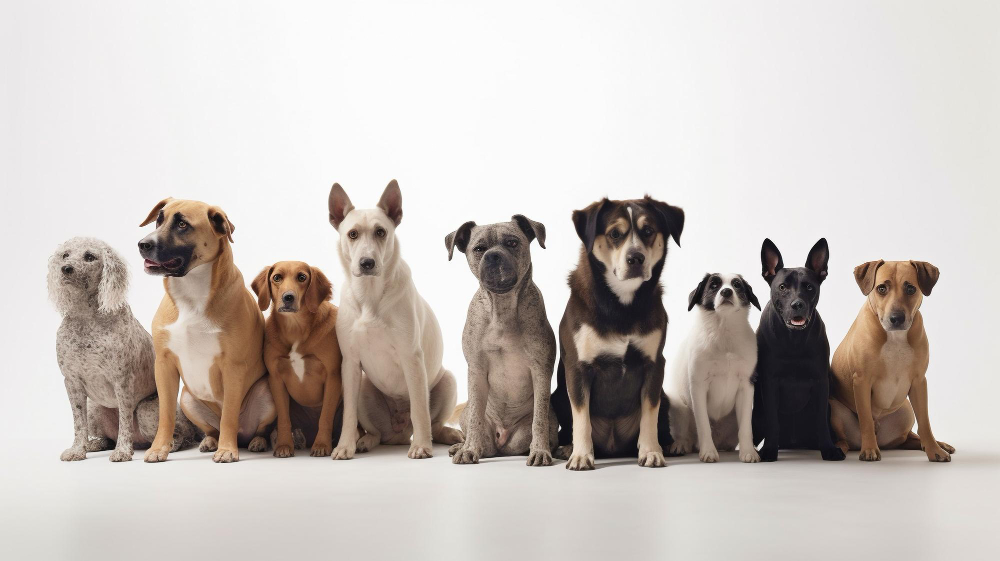Selecting the perfect dog breed can be a daunting task, given the plethora of options available. The American Kennel Club (AKC) has officially recognized a multitude of breeds, each with its unique set of characteristics, care requirements, and temperaments. While the allure of adorable puppies is hard to resist, it’s crucial to remember that dogs grow, and some breeds can become quite large. This comprehensive guide aims to provide you with a detailed roadmap to help you make an informed decision.
Understanding the Role of the American Kennel Club (AKC)
The American Kennel Club (AKC) is the U.S.’s premier authority on dog breeds, responsible for setting standards for breed recognition and responsible breeding. Their website offers an extensive list of officially recognized breeds, complete with detailed profiles. These profiles serve as a comprehensive guide, covering everything from a breed’s history to its care requirements. For those interested in the distinctions between species and breeds, this informative article is an excellent resource.
The AKC’s recognition is more than just a stamp of approval; it’s a rigorous process that evaluates lineage, health, and temperament. This recognition acts as a quality benchmark for both breeders and prospective dog owners. The AKC also actively promotes responsible dog ownership through various educational programs and community services.
6 Key Factors to Consider When Choosing a Dog Breed
- Size Matters: Matching Dog Size to Your Living Space
Size compatibility is crucial when selecting a dog breed. Larger breeds often need more space and may not be ideal for apartments, while smaller breeds are generally more adaptable to confined living areas. - Activity Level: A Commitment to Exercise and Mental Stimulation
Different breeds have varying activity levels. Some require rigorous physical and mental engagement, while others are more laid-back. Assess your daily schedule and willingness to meet the exercise needs of your chosen breed. For more insights on versatile breeds, refer to this comprehensive guide. - Lifespan: Preparing for a Long-Term Relationship
Lifespan varies by breed, requiring a long-term commitment of up to 15 years or more. Assess your readiness for this duration before choosing a breed. - Family Dynamics: Compatibility with Household Members
Your chosen breed should be compatible with your family size and dynamics. Some breeds are better suited for families with children, while others thrive in quieter, adult-only environments. - Research: The Cornerstone of Responsible Ownership
Conduct thorough research on various breeds to understand the responsibilities that come with owning a particular type of dog. This includes understanding their healthcare needs, grooming, and temperament. - Individuality: Beyond the Breed
Remember that dogs are unique individuals, regardless of their breed. Personalities and needs can vary, so it’s advisable to interact with multiple dogs before making your final choice.
By considering these key factors, you’ll be better equipped to make an informed decision that aligns with your lifestyle and preferences.
The Appeal of Small Dog Breeds
Advantages of Owning a Small Dog
- Space Efficiency: One of the most significant advantages of small dogs is their suitability for limited living spaces. Whether you reside in an apartment or a small home, these diminutive canines require less room, allowing them to comfortably roam and play without causing much disruption.
- Lower Exercise Needs: Small dogs typically require less exercise than medium or large breeds, making them a convenient choice for busy individuals or those with mobility challenges. However, it’s essential to provide some physical activity to prevent obesity and ensure overall well-being.
- Budget-Friendly: The smaller size of these dogs often translates to lower maintenance costs. They consume less food, and their healthcare expenses, such as medications and surgical procedures, are generally less expensive. Even items like clothing and accessories are often cheaper for smaller breeds.
- Travel Convenience: The compact size of small dogs makes them highly portable, making it easier to take them along on trips, whether it’s a quick run to the grocery store or a long-haul flight.
- Affectionate Companions: Small dogs are often known for their affectionate nature. They can form strong bonds with their owners and are usually eager to please. However, it’s worth noting that some small breeds, like the Spitz and Pincher, can have more challenging temperaments, especially around small children. For a detailed comparison between the American Eskimo Dog and the Japanese Spitz, you can refer to this article.
By understanding the specific advantages of small dog breeds, you can make a more informed decision that aligns with your lifestyle and needs.
Spotlight on Popular Small Breeds
- Poodle: The Poodle is a perennial favorite among small dog breeds, and for good reason. Known for their high intelligence and ease of training, Poodles rank among the top five most intelligent dogs. However, their intelligence means they require daily mental and physical stimulation to prevent behavioral issues like possessive behavior and excessive barking. They are best suited for active individuals or families and are not recommended for those seeking a more independent pet.
- Yorkshire Terrier: The Yorkshire Terrier enjoys widespread popularity, thanks in part to its adorable appearance and playful demeanor. These dogs are particularly good companions for children and people with allergies, as they are one of the few breeds that do not shed hair. Their small size and hypoallergenic coat make them ideal for indoor living and for families with specific health considerations.
- Dachshund: Affectionately known as ‘weenies,’ Dachshunds are adaptable and energetic, making them well-suited for a variety of living situations, including apartments. They are excellent companions for children and can get along with owners of diverse personalities. However, their high energy levels mean they require daily walks and mental stimulation to stay happy and healthy.
By spotlighting these popular small breeds, you can gain a more nuanced understanding of what each has to offer, helping you make an informed decision that aligns with your lifestyle and preferences.
The Allure of Large Dog Breeds
Advantages of Owning a Large Dog
- Protection: One of the most compelling reasons people opt for large dogs is their natural protective instincts. Breeds like the Rottweiler and the Tibetan Mastiff are often used as guard dogs, providing an added layer of security for your home. For an in-depth comparison between large breeds like the Russian Bear Dog and Tibetan Mastiff, you can visit this link.
- Physical Activity: Large dogs usually demand more exercise, making them a great fit for active individuals or families who enjoy outdoor pursuits such as hiking or agility training. Their higher activity needs offer a built-in incentive for regular physical engagement for both the dog and the owner.
- Spacious Living: Large dogs are better suited for homes with ample outdoor space. Their need for exercise and play is better accommodated in a setting with a backyard or nearby parks, allowing them more freedom to roam and explore.
- Trainability: Many large breeds are known for their intelligence and ease of training. This can be a significant advantage for owners interested in advanced obedience, agility competitions, or even service work.
Spotlight on Popular Large Breeds
- Rottweiler: Often used as guard dogs, Rottweilers are actually quite affectionate and social when properly trained and socialized. They are particularly well-suited for homes with ample space and can get along well with children and other pets, provided they are introduced correctly.
- Siberian Husky: Known for their adventurous spirit and high energy levels, Siberian Huskies are ideal for active individuals or families. Originating from Siberia where they were used for sledding and herding, Huskies are built for endurance and speed, making them excellent companions for long hikes or runs.
- Border Collie: Considered one of the most intelligent dog breeds, Border Collies are highly active and require substantial physical and mental stimulation. They are best suited for homes with large outdoor spaces and are excellent companions for children who can match their energy levels.
For more information on large breeds like the Newfoundland Dog and the Great Pyrenees, you can read this comparison article.
By understanding the specific advantages and requirements of large dog breeds, you can make a more informed decision that aligns with your lifestyle and needs.
Conclusion: The Art of Choosing Your Canine Companion
Selecting the right dog breed is a nuanced decision that hinges on multiple factors, including your lifestyle, family dynamics, and the dog’s individual needs. Whether you’re drawn to the compact convenience of small breeds or the protective nature of larger ones, it’s crucial to conduct thorough research and self-assessment. Resources like the AKC and specialized articles offer invaluable insights to guide your choice. Remember, the ideal dog for one person may not be the perfect fit for another, making personalized evaluation essential for a fulfilling companionship.














